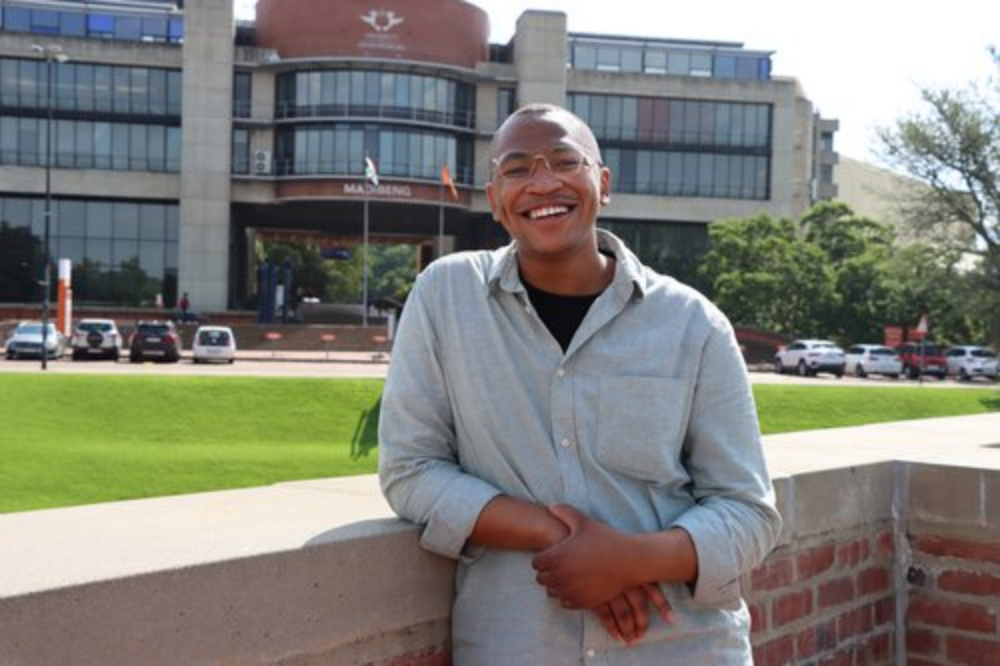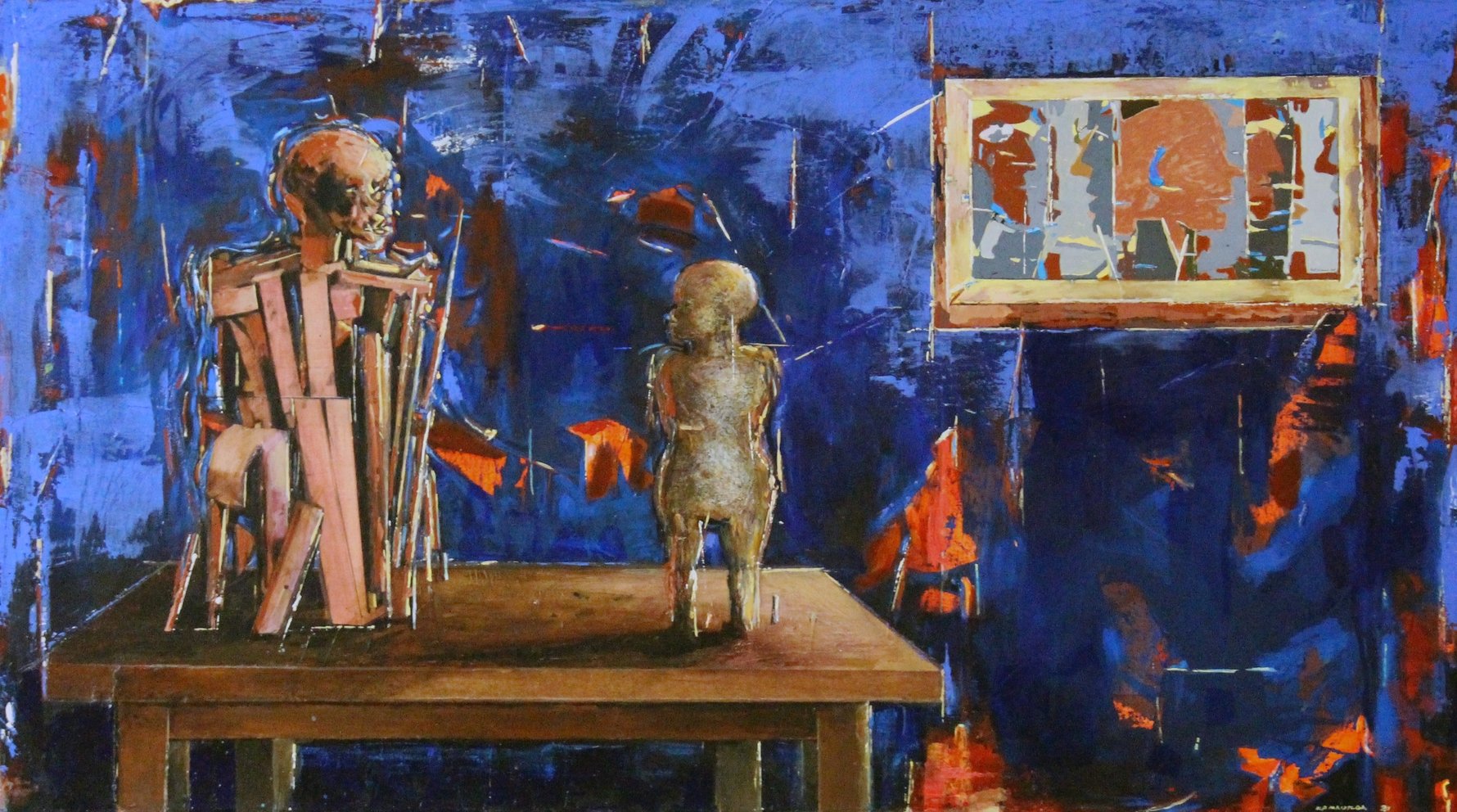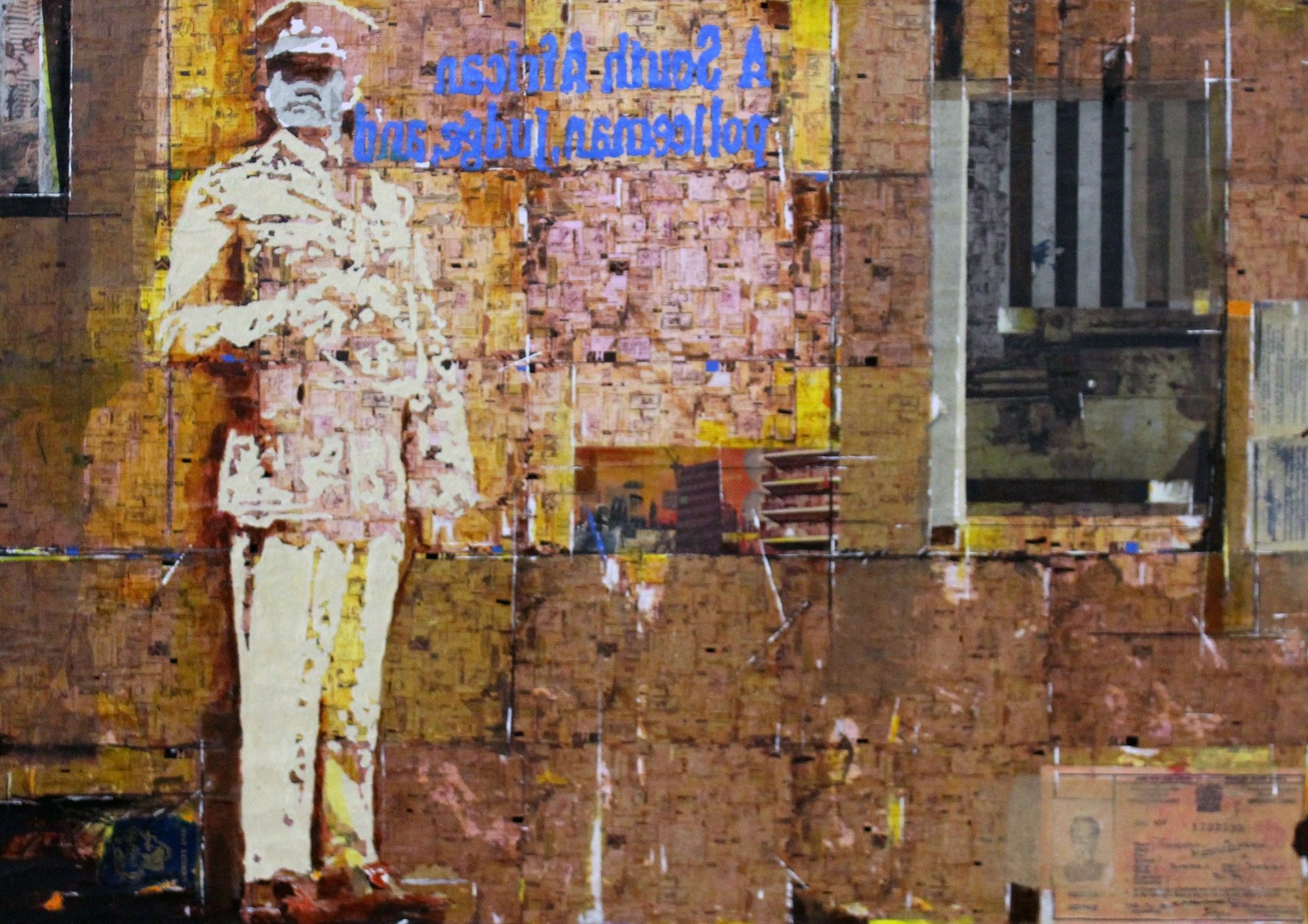We wanted to find out what it was like to work with an artist as legendary as Pat Mautloa and where Seshoka locates the UJ Arts Gallery within Johannesburg's vibrant art scene.

1. What did you first encounter the work of Pat Mautloa, and how does it feel to be curating a major solo exhibition by this celebrated artist?
It feels like a lifetime ago. The past three years have felt like an eternity. But, if my memory serves me correctly, my earliest encounter was a few years ago at the Bag Factory. I was there to view works for an exhibition or auction. It feels a bit surreal. Never had I imagined that I would curate such a show, and let alone Pat’s first solo in the UJ Art Gallery.
2. Knowing Mautloa’s reputation as an art giant in Johannesburg, what did you think was the most important aspect of portraying his body of work in the exhibition to effectively communicate his interpretations of the city?
Honesty was of the utmost importance because Johannesburg is a city filled with secrets. The exhibition explores untold truths about the city and the dark history that is not spoken about. This is reflected in Pat’s work, especially in the piece titled Terminator, which depicts a police officer surrounded by a background that is layered with multiple images of a dompas [the official document that black people were forced to carry during apartheid, limiting freedom of movement]. So the purpose of these pieces was not to shy away from our past, but to initiate dialogue and conversation.
3. How do you feel Pat Mautloa’s work captures the ‘sounds’ and ‘flavours’ of Johannesburg?
Mautloa’s artworks capture both Johannesburg’s harmony and the chaos. The use of discarded objects in Pat’s artworks draws striking parallels with much of the realities that people encounter in and around the city. The lack of belonging, inclusion, and despair that is experienced by people in Johannesburg resonates much with the discarded nature of the found objects. These objects have similarities with the people who find themselves in the city with no sense of full self; trying to find harmony by merging themselves with the chaos in the city.
The use of discarded objects in Pat’s artworks draws striking parallels with much of the realities that people encounter in and around the city.
4. The exhibition title is ‘Urban Soundscapes’ which are recorded by Pat Mautloa through these artworks. What does Urban Soundscapes mean to you and how would you describe the sound of Johannesburg?
Johannesburg is a city that is home to people from all over the world, and it is a cultural melting pot. Therefore, the city has many sounds because of the diverse population that lives in it, and different parts of Johannesburg sound different (metaphorically). The Urban Soundscapes exhibition shows all the flavours of the city, the bold ones and the mellow ones. It represents all the people that live and work in the city, and how their lives are intertwined with the commotion of the city.

5. Mautloa reflects on the ‘old’ and the ‘new’ by using found and discarded objects from Johannesburg to repurpose in his work. How do you feel this process contributes to the representation or Soundscape of Johannesburg as an ever-evolving city?
The city is a space where everyone belongs, but no one originates from; while some have grown familiar with it, it’s still uncharted territory for others. The city might seem dull, but it is exciting for others. While the monstrous buildings might look grotesque and threatening to some, others see them as a platform to reach for the sky. Mautloa’s conceptualisation and artistic process demonstrates the dualities that exist within Johannesburg. It shows that all that glitters is not always gold in the City of Gold.
6. Urban Soundscapes includes works by Pat Mautloa that have never been exhibited before. What
can viewers expect from these never-before-seen works?
Nothing remains hidden forever. Viewers should expect to see an expression of how people construct their own sense of being by creatively overcoming the challenges that they face in a city like Johannesburg. It’s an expression of how Johannesburg can build or break one’s character.
7. What is the highlight of this exhibition?
This is Pat’s first solo exhibition in the UJ Art Gallery. While viewers are spoilt for choice, this is the first time that viewers will see some of Pat’s new work and will be able to experience not only Pat’s paintings but also his sculptures.
8. As a curator what do you see your role in shaping the city as being?
As a university gallery, bearing the name of the city and located in close proximity the inner city it is our role to both nurture and enable the arts. We’re in the midst of a twilight moment, emerging from a period whereby the pandemic ravaged the arts. As a curator and as a university gallery it is our responsibility to collectively contribute towards rebuilding our sector and addressing the structural flaws in that exist within the arts.

9. You studied social science before pursuing a Master of Arts degree and entering the art world. In what ways has this influenced you?
My interdisciplinary studies background have broadened my view in understanding the arts as social discourse. Having had the opportunity to study disciplines such as classical civilisations, history, anthropology and ultimately specialising in Heritage Studies, I have gained a unique appreciation and perspective of the arts as a whole. It is this view that has shaped my curation and leadership styles. This allowed me to lead projects in digitization, exhibitions development, collections management and natural environment management. The goal is to nurture, support and partner with emerging and mid-career artists, and to create platforms and dialogue to further engage with established artists and curators who historically would have not had the opportunity to show their work at a space like the UJ Art Gallery.
The city is a space where everyone belongs, but no one originates from... Mautloa’s conceptualisation and artistic process demonstrates the dualities that exist within Johannesburg. It shows that all that glitters is not always gold in the City of Gold.
10. As curator of the UJ Art Gallery what goals do you have for the institution and what changes do you envision for the gallery? How does this most recent exhibit by Pat Mautloa tie into this?
Leveraging on the University’s global presence, we will be dedicating the next 12 to 24 months towards repositing the UJ Art Gallery as a leading cultural institution in South Africa and across the African continent. We will be shifting our focus towards developing a new operating model for the Art Gallery that is centred around consolidating and strengthening our strategic partnerships (local and international), audience development, digital integration and most importantly supporting emerging, and mid-career artists and curators. Furthermore, as an institution located within one of the leading 4IR universities on the continent, we are exploring options on how best to expand on our digital offerings, and fast track the digitisation of our collections, and the implementation of accessible digitalisation initiatives that will allow more people to view blockbuster exhibitions such as this one from the comfort of their classroom, home or anywhere in the world.
11. In the process of curating this work did it reveal anything new about the city to you?
Yes, it did. The city is diverse and dynamic, it is constantly changing and evolving. Things aren’t always what they seem, and this has been echoed by this exhibition. Much like the figures that appear within Pat’s artworks, we are shape-shifters taking on new forms as and when required; how we present or restrain ourselves in public and private spaces varies and is constantly fluctuating. This exhibition further engages with the notions of societal and urban decay; a commentary on how Joburg’s inner city has not yet fully disintegrated, but that there are pockets in the city where positive social discourse is materialising.
12. Where do you find belonging in a place like Johannesburg which is so often characterised by its state of constant flux and chaos?
There is beauty in chaos. I find that when I explore both chartered and unchartered territory within the city, I am able to see and experience hidden gems. But there is refuge in nature and the arts, and since the city itself is an artwork, I find that there is so much to explore and see in it. I can go to theatres to watch performances, explore other galleries and meet interesting and eccentric people.




Comments